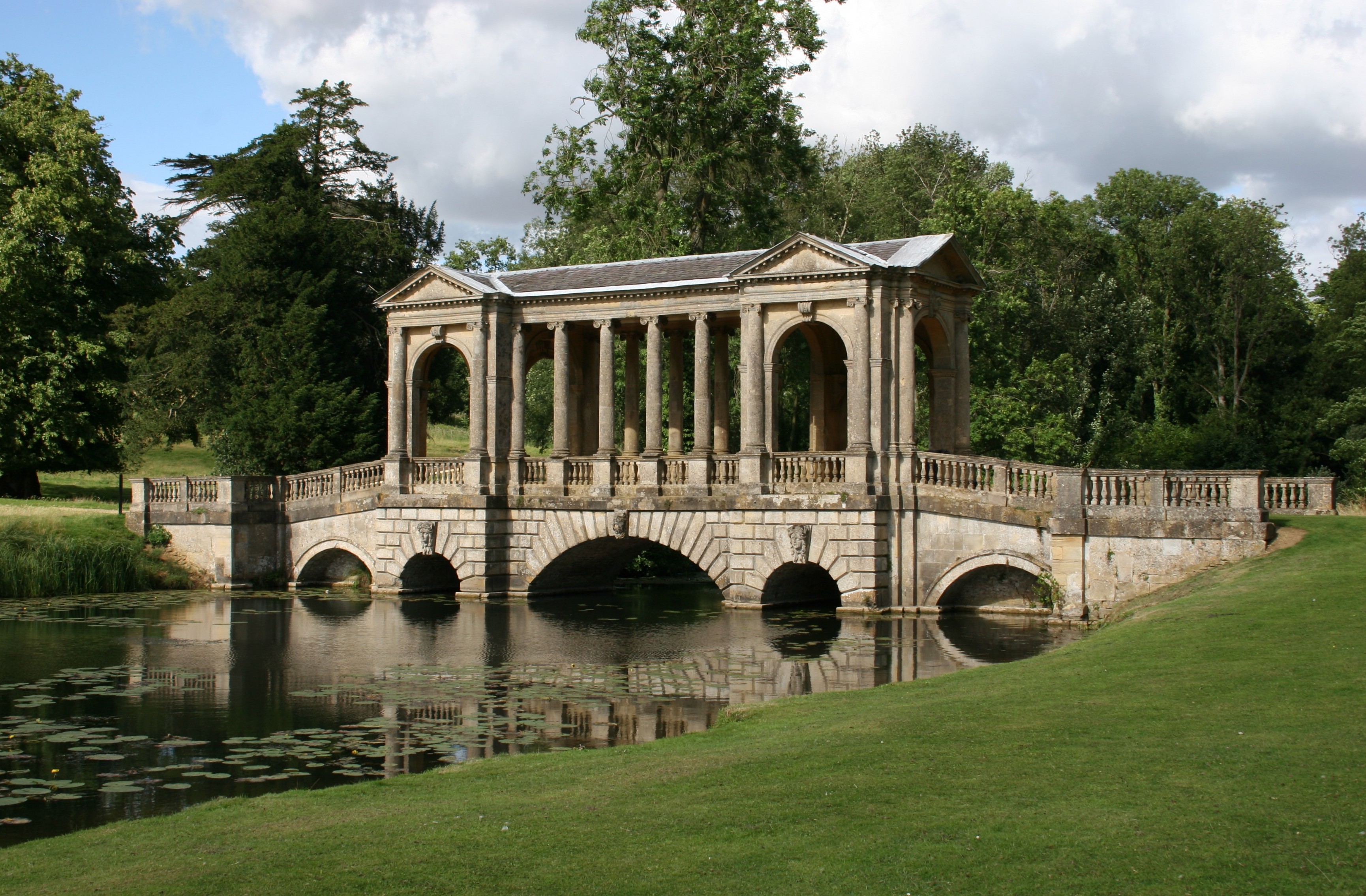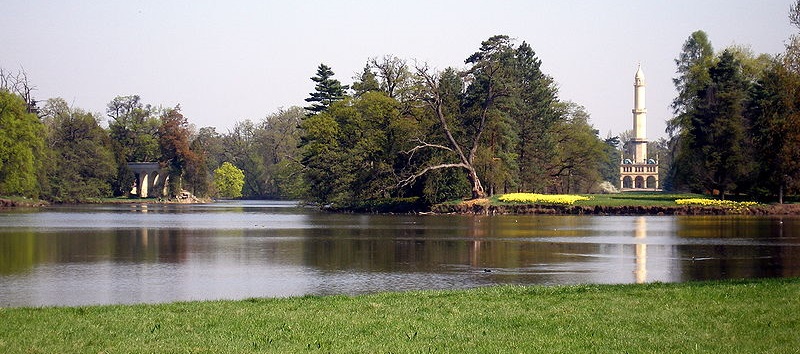-
Capabilities (Weekly blog, 8 May 2016)
Posted on May 8, 2016This year, we’re celebrating Lancelot ‘Capability‘ Brown’s 300th birthday so when I saw this handy ‘how to spot a Capability Brown landscape’ video on the National Trust (England, Wales and Northern Ireland) twitter feed this week, I thought it might make a good theme for my blog. It seemed a good reason to reflect on various things, not least because I grew up – and still live – in what I had always taken to be a Capability Brown landscape park …

Aerial view of the Grange at Northington © Adventure Balloons
And when I check the video, it all seems to line up: Dammed river with a dramatic lake? Check. Cedar trees? Check. Clumps of trees? Check. But in my research I find scant mention of Brown, other than the fact that Brown banked with the Drummond family and it was Henry Drummond who transformed the original brick house into the neoclassical Greek Temple we see today.
My first thought was to write about something else altogether, but I’ve decided to run with it anyway. (And as Alan Power says in the video, you never know, it may well be Brown after all …!)
Brown joined the gardening staff at Stowe in 1741 and became Head Gardener the following year on a salary of £25 a year. Some of you will know that Stowe is now in the care of the National Trust along with many other Brown-designed landscapes – 18 in total. This year is a big thing tercentenary-wise and you’ll hear more about Capability Brown as 2016 progresses, but my reflections are purely personal and vaguely international – there is a much more serious ICOMOS Conference ‘Capability Brown: perception and response in a global context‘ taking place in Bath this September.
A month or two ago, I met some of the team planning a twinning programme between Stowe and Lednice-Valtice, the World Heritage-listed cultural landscape in the Czech Republic where early 19th Century Duke Jan Josef I introduced the ‘English’ concept of a designed park, strongly influenced by the work of Capability Brown at Stowe and elsewhere in England. Wonderful to see this partnership getting off the ground, particularly in this year of celebration of ‘England’s greatest gardener’.
Whilst Head Gardener at Stowe, Brown began taking on freelance commissions and by the 1760s was earning £6,000 a year! (Clearly why he needed a society banker!) He designed over 150 parks, all with characteristic informal parklands, smooth undulating grass, clumps of irregularly planted trees and serpentine lakes, designed to be appreciated through carefully composed views from the house, garden and walks/rides through the park.
We know that the river at the Grange was dammed in 1764 to create lakes by Robert Henley, the 1st Earl of Northington, in the English landscape style. (I was born at ‘River House’, built in the 1860s as the Gas Cottage, so just a little upstream from the two lakes but with fabulously bucolic views of the Grange Park.)
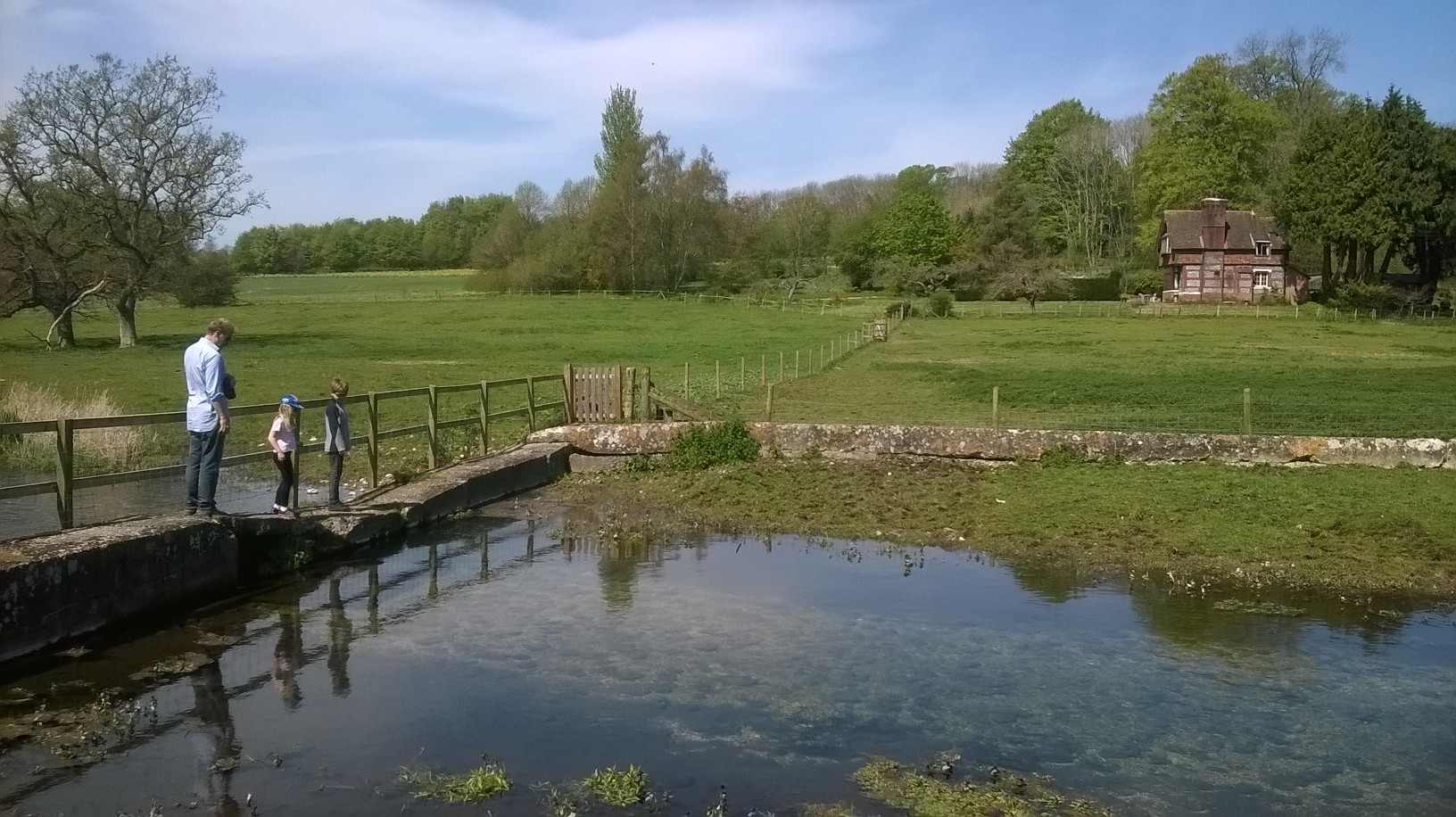
On the way back to River House today after a morning tidying verges and enjoying the delights of the Village Hall Café
The Grange passed through various hands and transformations into the Greek Revival monument it is today, designed by William Wilkins (architect of the National Gallery in London). In 1817 the estate was bought by the Baring family, another banking dynasty who at the time were described by the Duc de Richelieu: “There are six great powers in Europe – England, France, Prussia, Austria, Russia and Baring Brothers” but are perhaps now best remembered for the bank’s spectacular implosion in 1995.
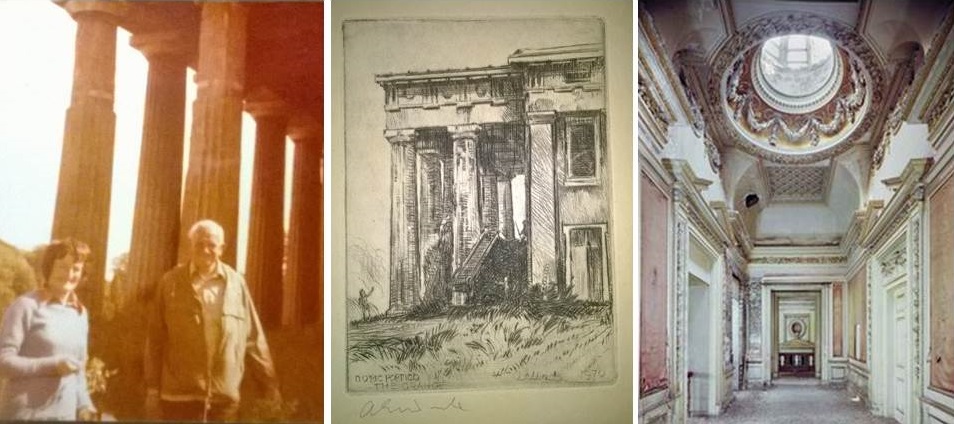
My mother at the Grange in the mid-1970s; an etching from 1970 showing its farm use and the Gallery with wonderful cupola
In the 1970s, the Grange was scheduled for demolition. The fixtures and fittings had been stripped but it was saved due to a combination of different spotlights: the Council of Europe’s ‘Age of Neo-Classicism’ exhibition in 1972; the 1974 exhibition at London’s V&A ‘The Destruction of the Country House’ and a vigourous campaign by Marcus Binney of ‘SAVE Britain’s Heritage’, involving Simon Jenkins, former Chairman of the National Trust.
“No house in England more dramatically portrays how close many great country houses came to complete destruction. Hundreds of houses were not so lucky” says Marcus Binney CBE, Principal Founder of SAVE. (Binney and SAVE were also involved in the securing of 16 New Street by the National Trust for Jersey and are about to produce a book of endangered heritage in Georgia with our colleagues thinking of establishing a National Trust for Georgia.)
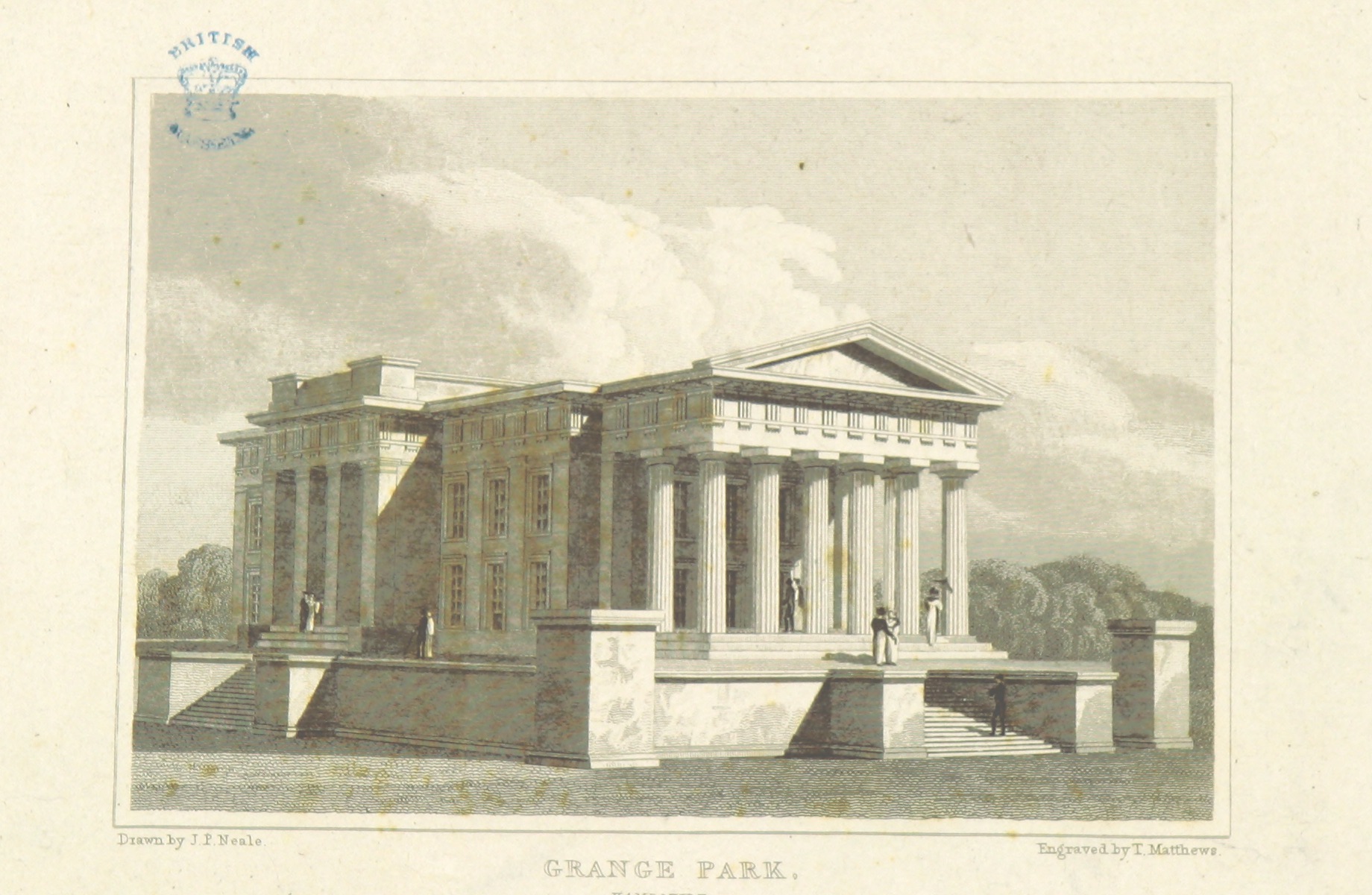
Grange Park, Hampshire by John Preston Neale, via Wikimedia Commons
The Grange passed into formal guardianship and in the early 1980s was reroofed and stabilised under the watchful eye of conservation architect and INTO friend, Donald Hankey. It is now looked after by English Heritage and stages an annual opera festival.
To the other side of the dammed river is Lake House, with its garden by another great designer, Sir Geoffrey Jellicoe, who also interestingly designed the JFK Memorial Garden at Runnymede, adjacent to the land in the care of the National Trust. I went to school with Sir Geoffrey’s great neice, Lynda Harris, now is also a landscape designer now based in Paris.
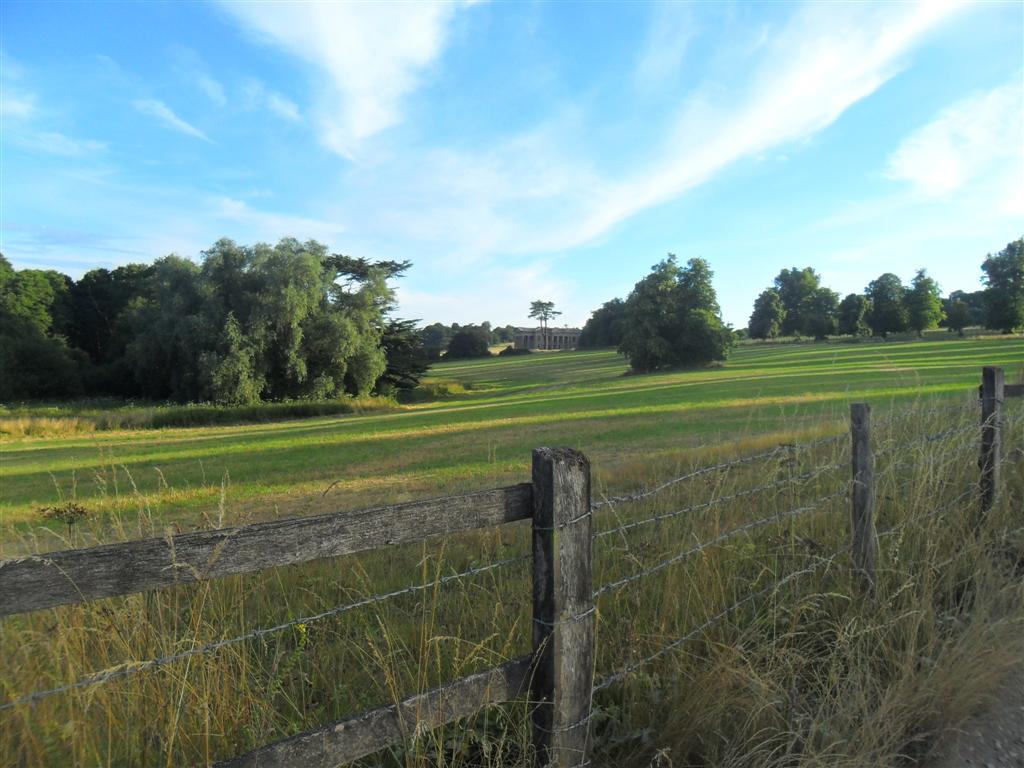
So as we look forward to long summer evenings, opera and walks around the landscape park, I reflect on a child- and adulthood much influenced by this enchanting place – and perhaps the very reason I do what I do.
Thanks for reading!

 44 (0)20 7824 7157
44 (0)20 7824 7157